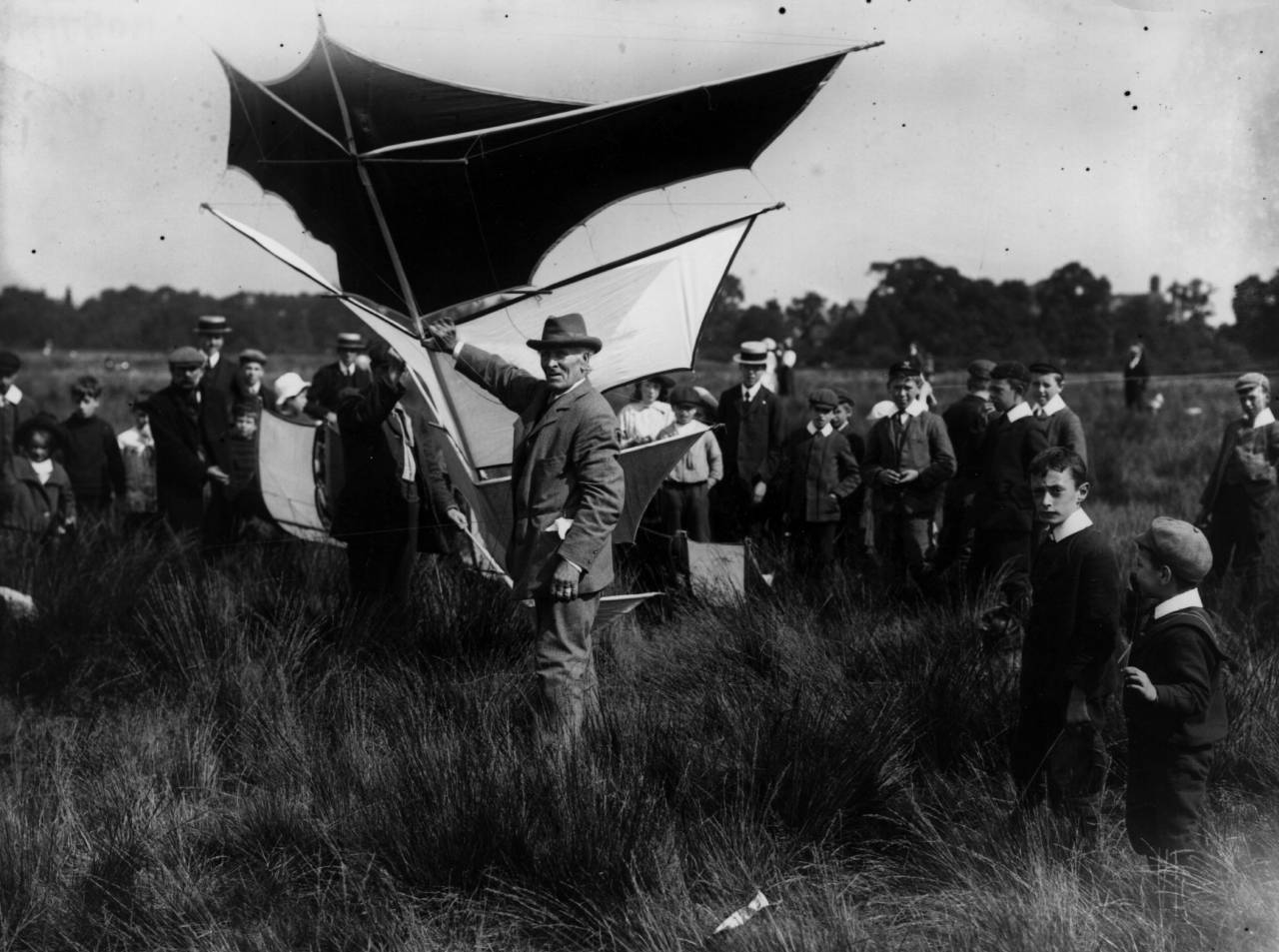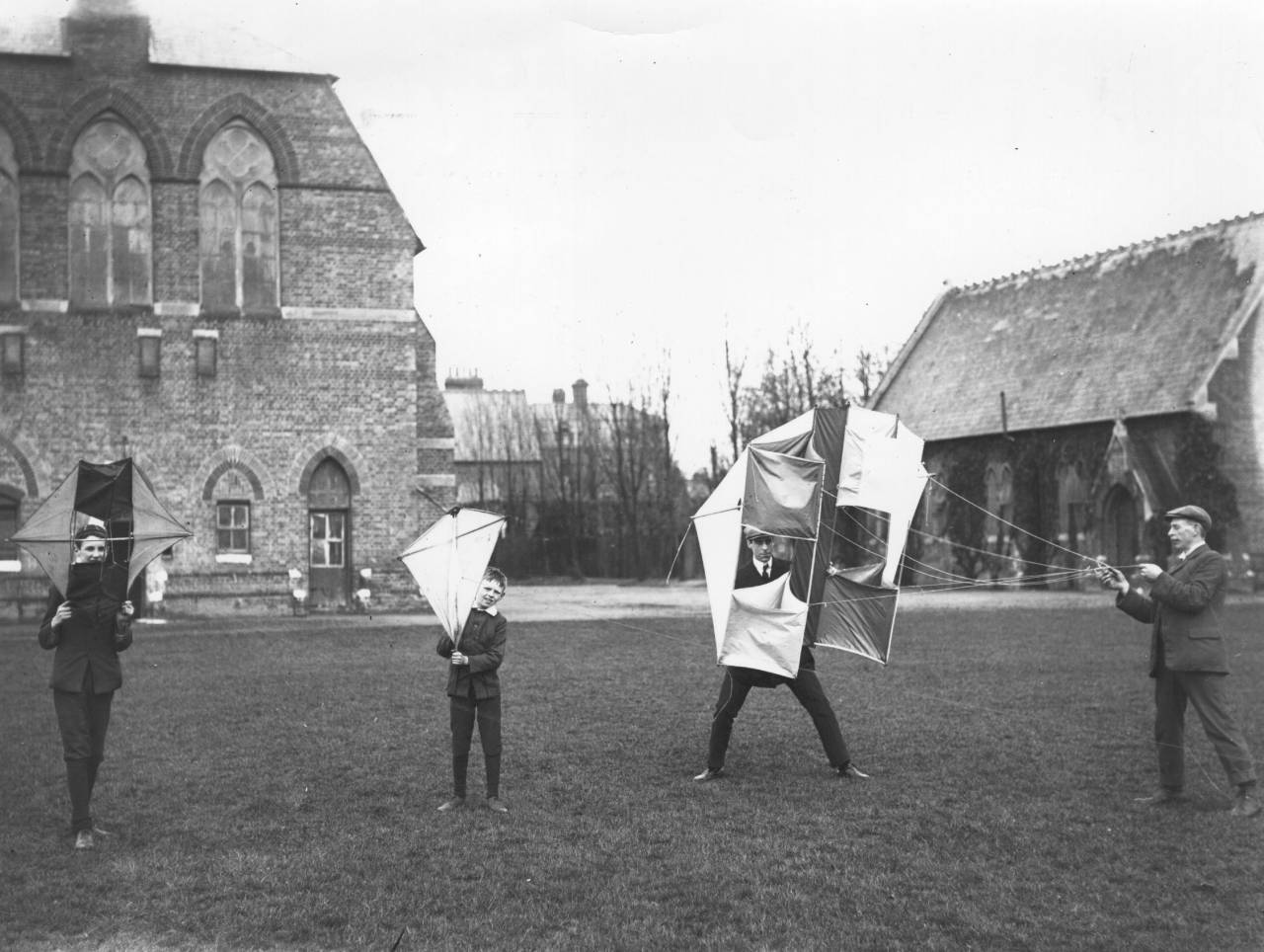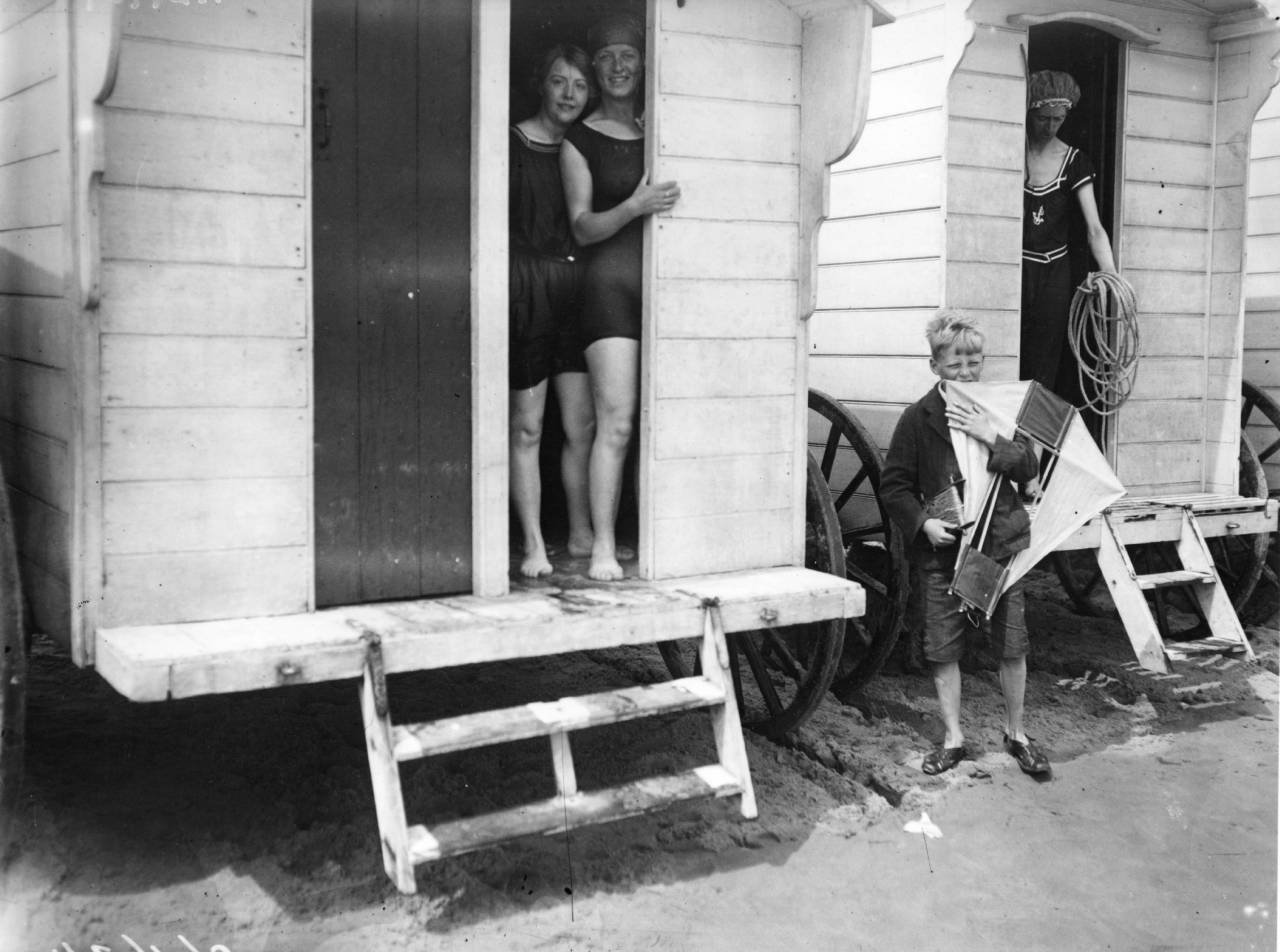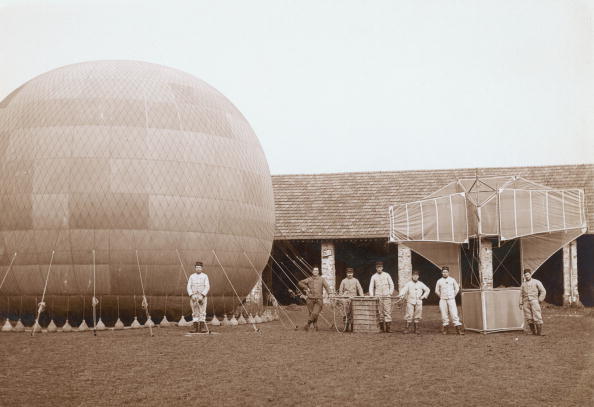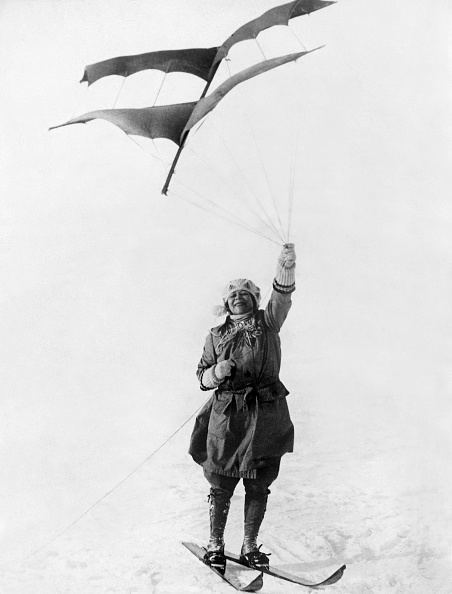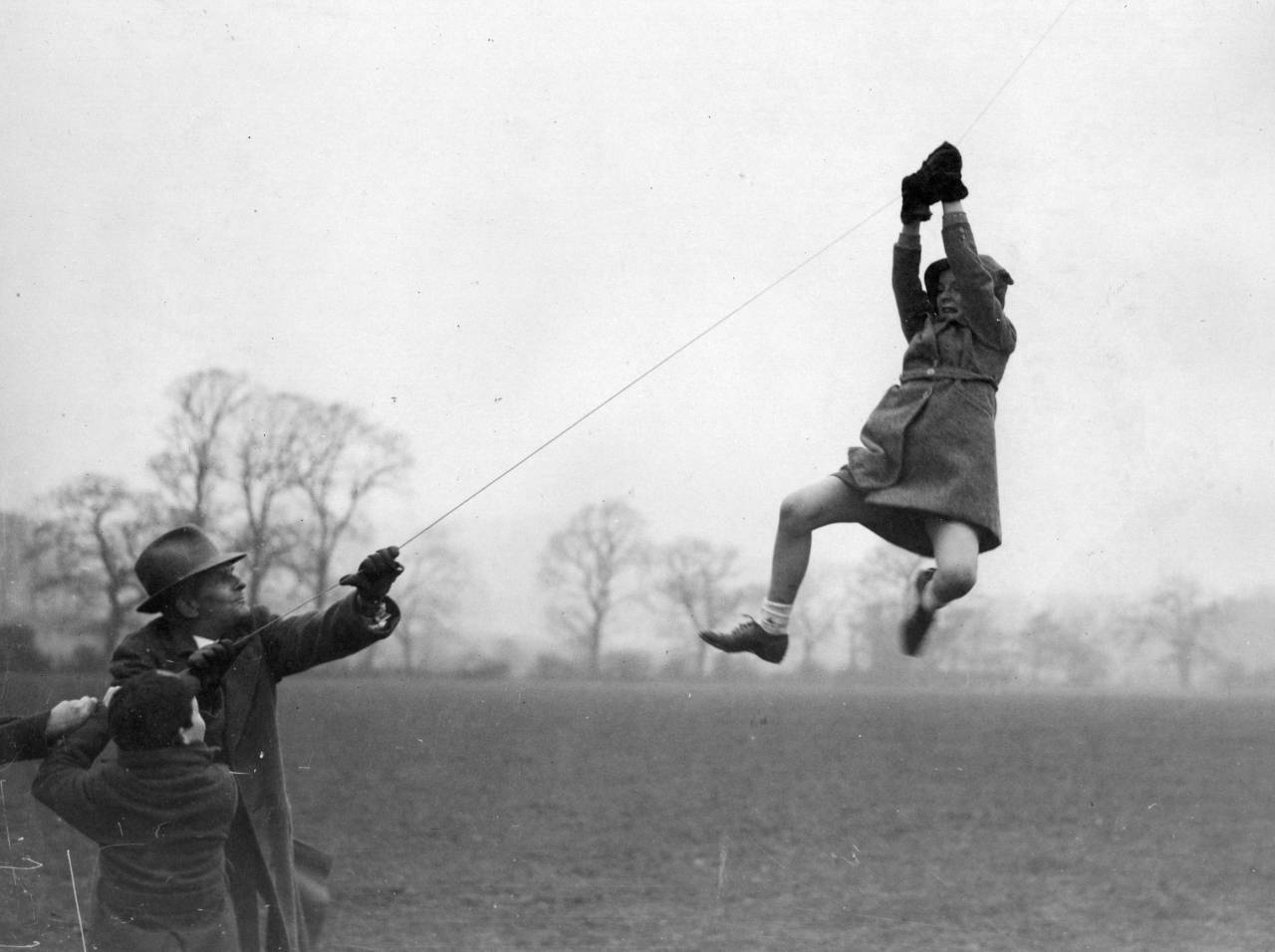Kites led to airplanes.
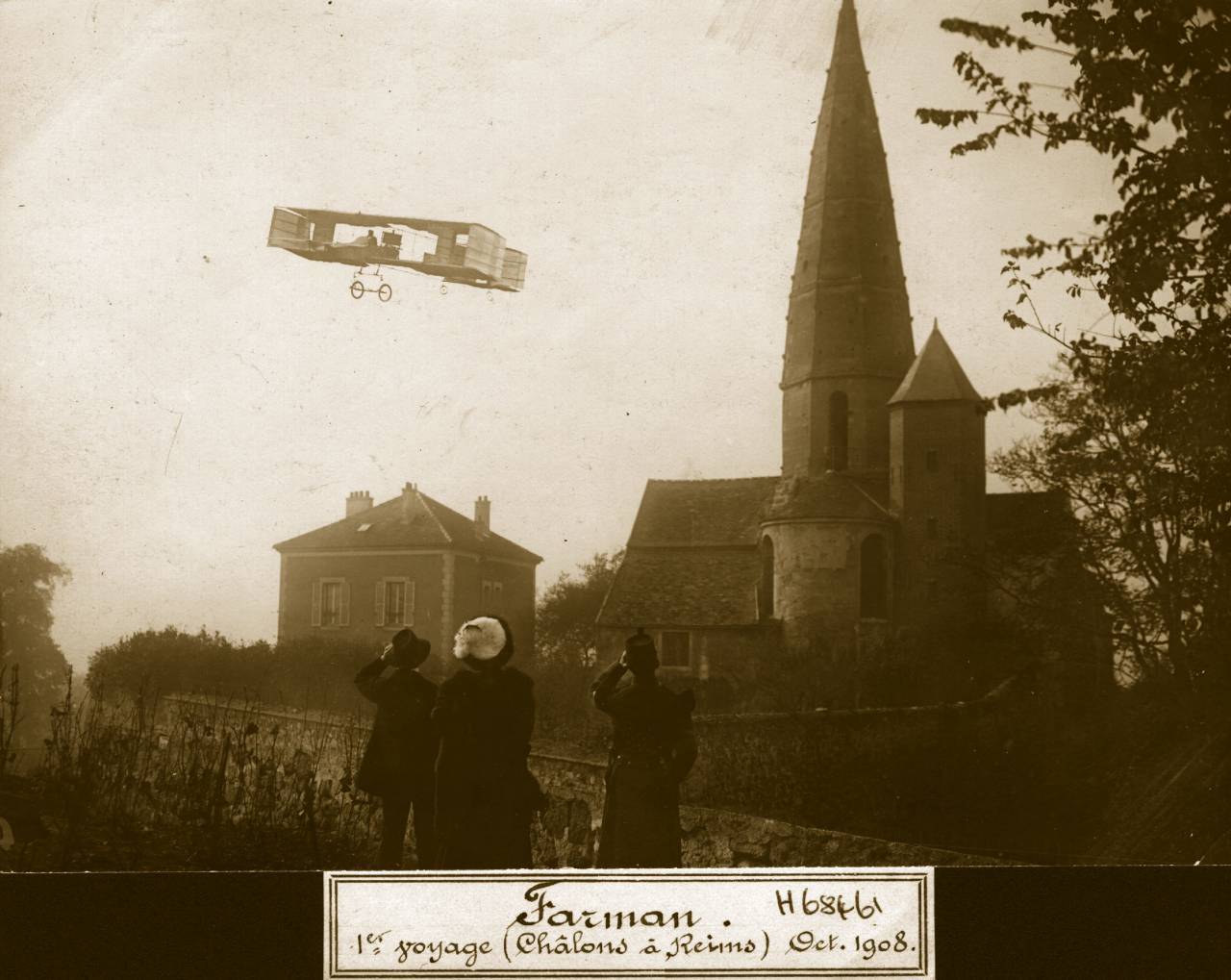
31st October 1908: French aviation pioneer Henri Farman (1874 – 1958) flying over a small village near Reims during his European cross country record flight of 26 kilometres from Chalons to Reims. He is flying a Voisin box-kite aeroplane and is making Europe?s first cross-country flight. Aeroplane Album – Vol 2 Page 9
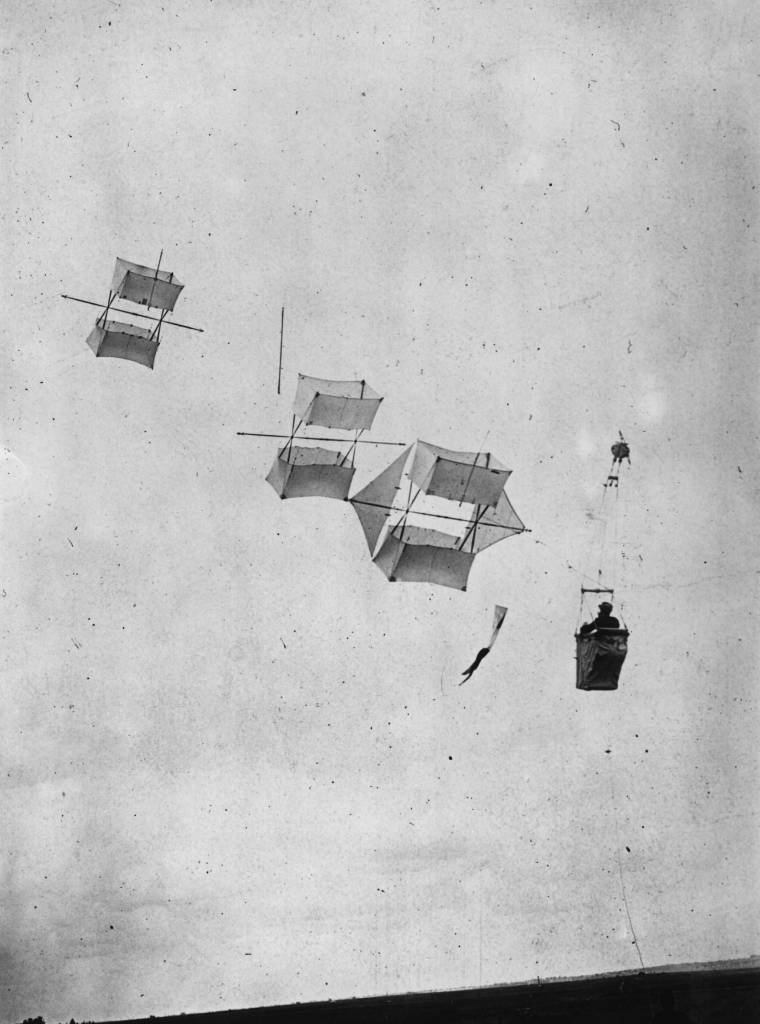
A man flying kite, used for observation purposes. Utilising the Madiot system of man lifters, developed from Cody’s design, it proved very effective. Madiot died in an air crash before the system was fully developed.
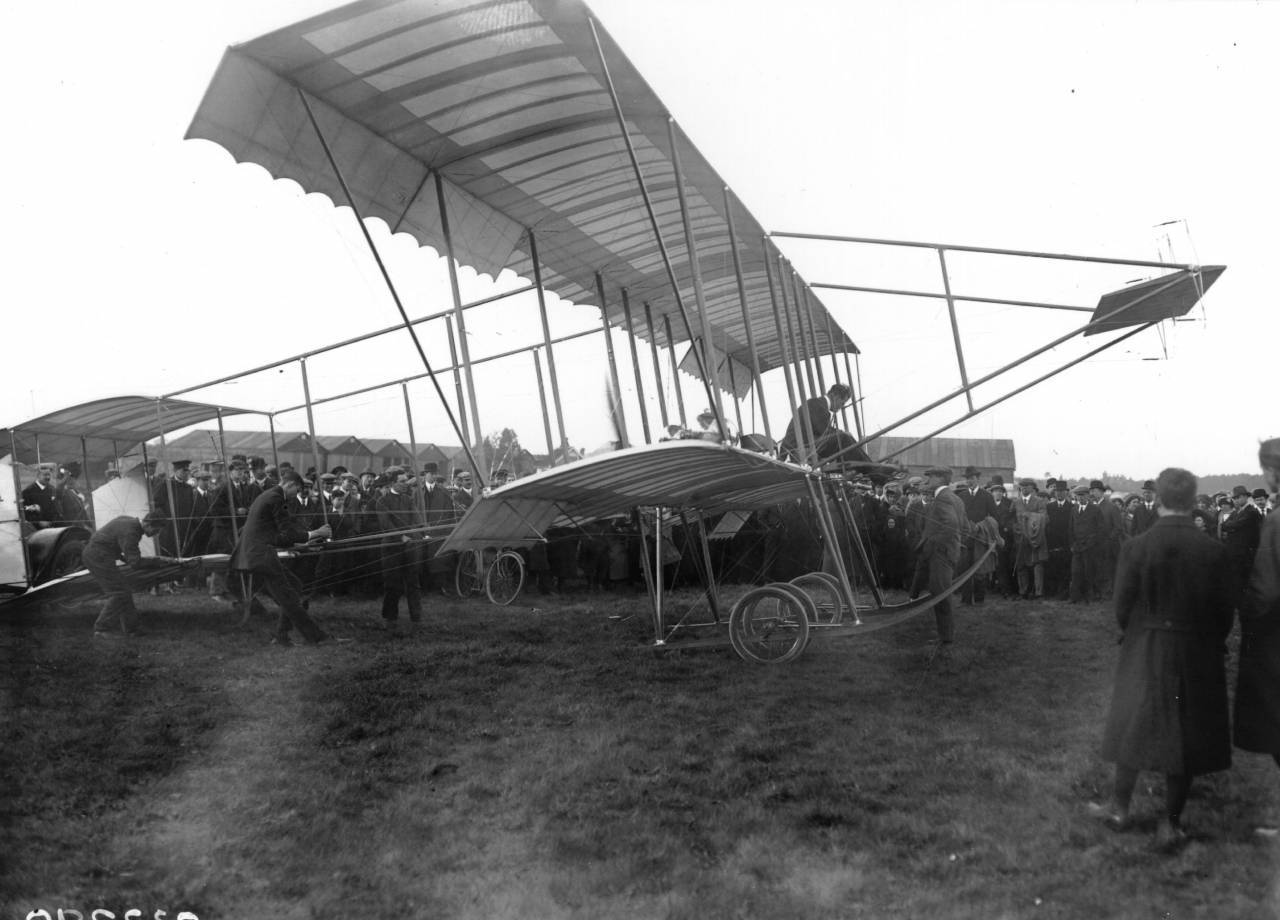
24th April 1911: A crowd at Brooklands gathers to watch a Bristol Box Kite bi-plane take off, with pilot Gilmour perched precariously above the wheels.
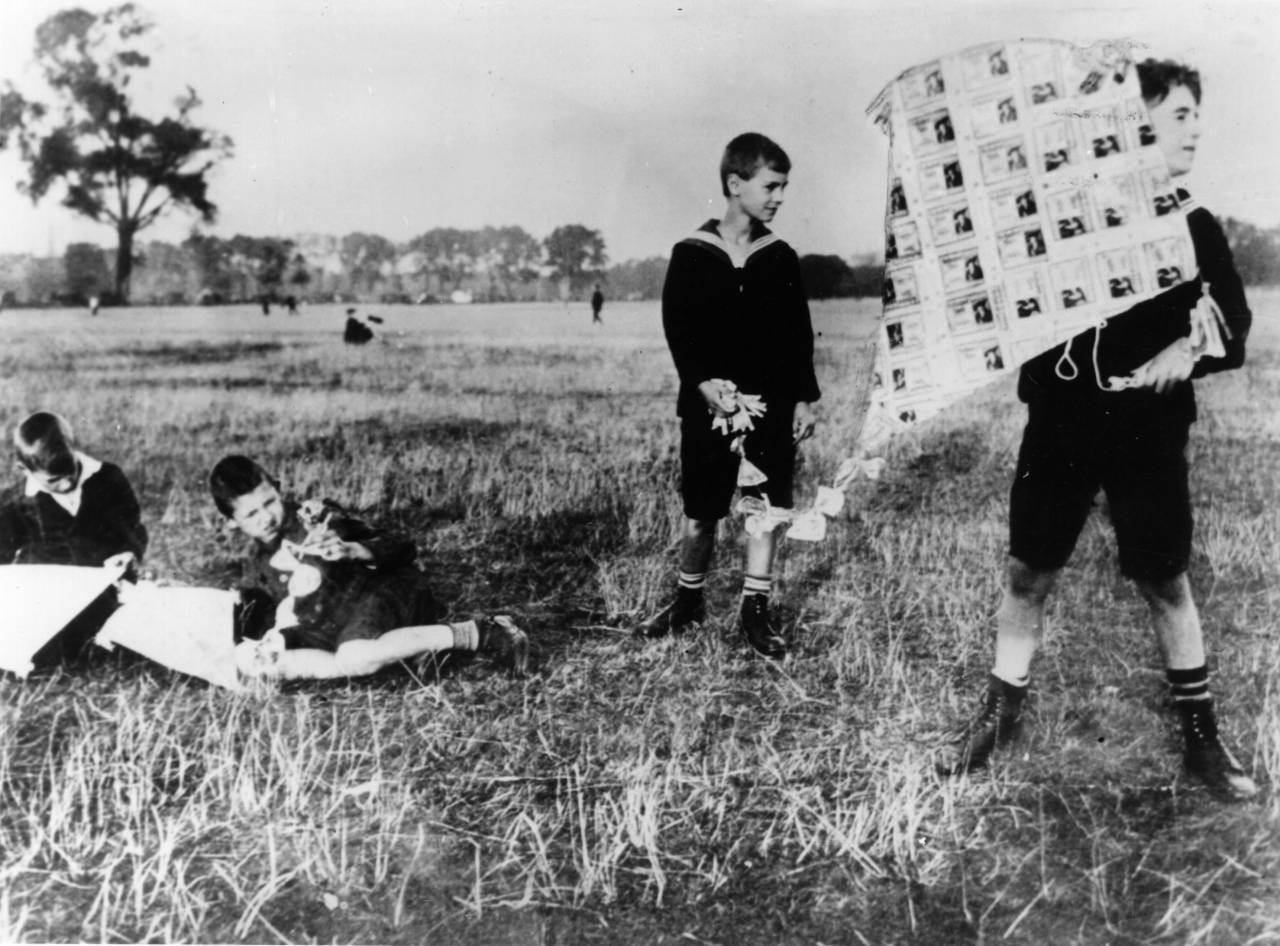
A boy with a kite made of banknotes in Germany, during the depression when escalating inflation rendered much currency worthless.
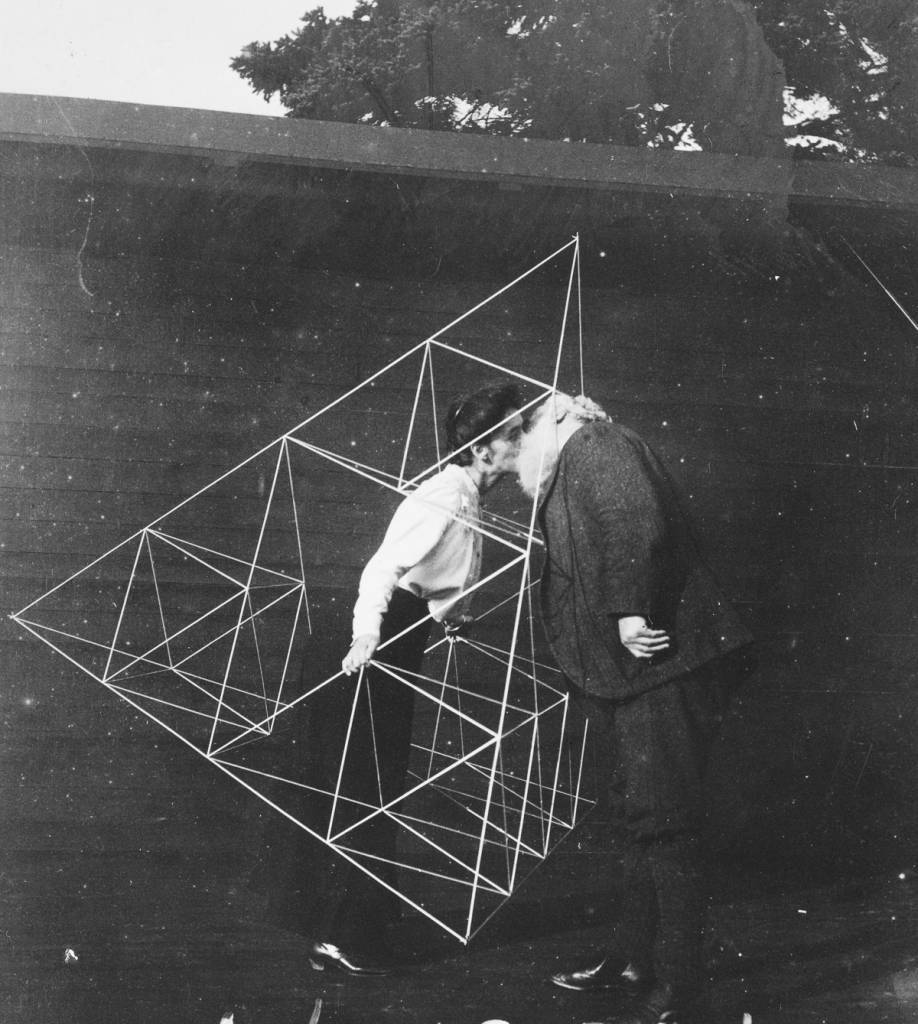
Oct. 16, 1903
Alexander Graham Bell kisses his wife Mabel Hubbard Gardiner Bell inside a tetrahedral framework.
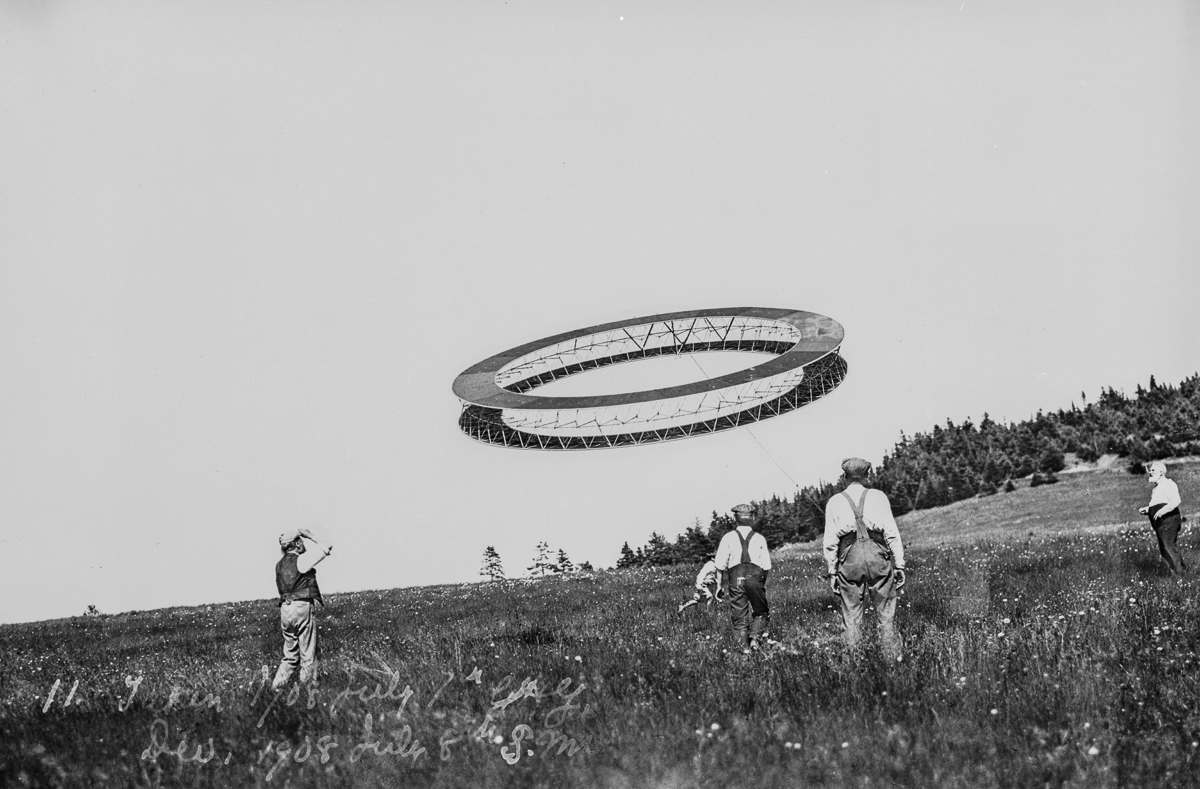
July 7, 1908
Alexander Graham Bell (right) and his assistants observe the flight of a circular tetrahedral kite.
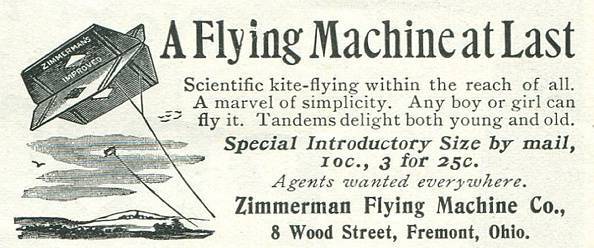
Advertisement for the flying machine kite for children by the Zimmerman Flying Machine Company in Fremont, Ohio, 1902.
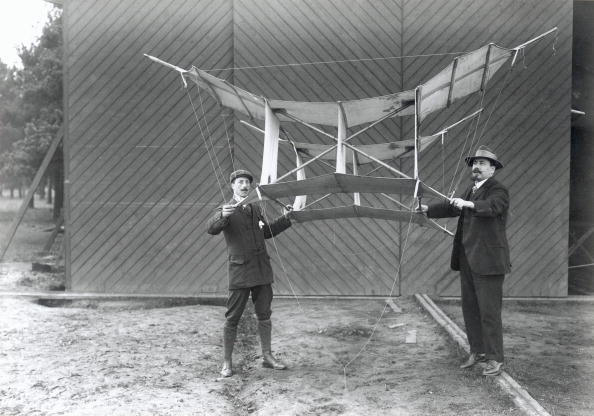
American-born Samuel Franklin Cody (1862-1913) obtained British nationality in 1896. He pioneered the manlifting kite as a means of military observation – the kite holds the observer while the cable is supported by several smaller kites. On 16th October 1908, Cody made the first powered flight in Britain in his British Army Aeroplane No 1 using a 50-hp Antoinette engine. He also took part in the planning and construction of the first British dirigible airship. He was killed in a flying accident at Farnborough, Hampshire, in 1913.
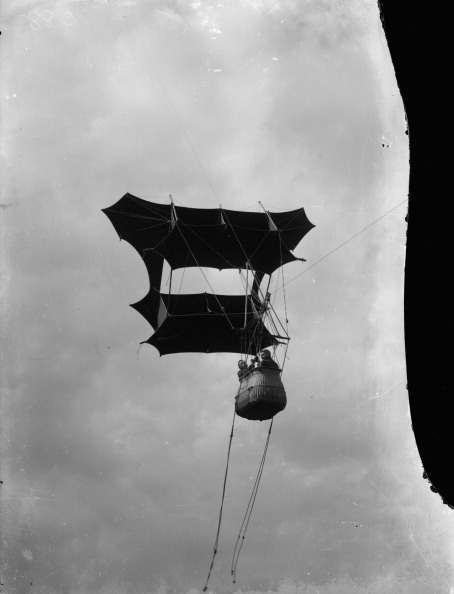
Aviation In Britain Before The First World War: The Work Of Samuel Franklin Cody In Airship, Kite And Aircraft Aeronautics 1903 – 1913, Demonstration of a two man kite designed by S F Cody for use by the British Army Royal Engineers Balloon Section. Such kites were intended for use when high wind speeds (above twenty miles an hour) prevented the use of observation balloons. The kite could ascend to heights of 2,500 feet in the right conditions, circa 1903.
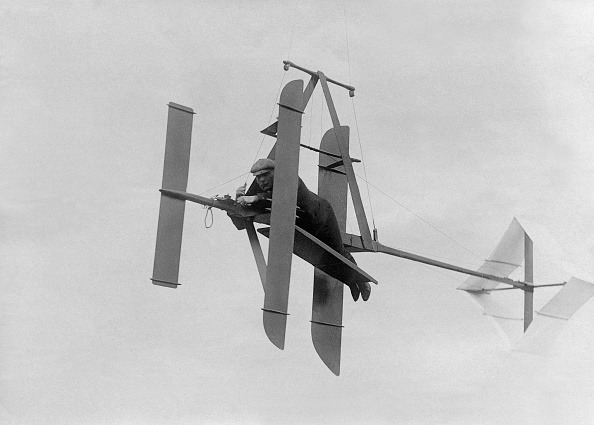
Sir Hiram Stevens Maxim’s kite flying with a pilot, constructed to study the problems of aviation, date unknown
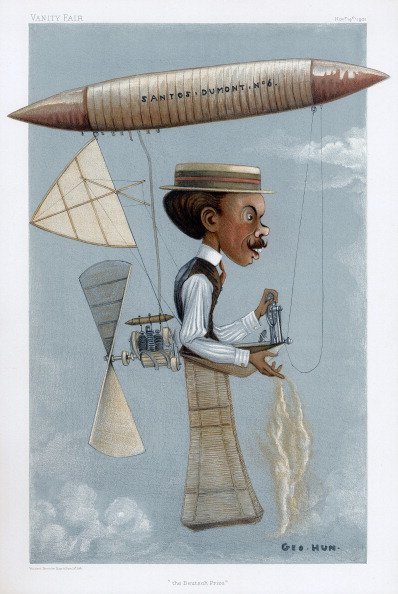
Alberto Santos-Dumont, Brazilian aviation pioneer, 1901. Santos-Dumont (1873-1932) made his first flight in the balloon ‘Brasil’ in 1898, and later that year his second balloon, ‘America’, remained in the air for 22 hours, winning him the Aero Club of Paris award. He solved the problem of steering airships when he circumnavigated the Eiffel Tower in his ‘Santos-Dumont no. 6′ dirigible in 1901 (pictured), for which he was awarded the Deutsch Prize. He later moved on to designing aeroplanes, and his ’14 bis’, an aeroplane with box-kite wings and tail which flew tail first made the first successful officially observed aeroplane flight in Europe in November 1906. His most successful aeroplane was the ‘Demoiselle’, built in 1909, which became a favourite with sporting pilots. Santos-Dumont became increasingly disillusioned with the use of aviation in warfare, and returned to Brazil, committing suicide in 1932. Cartoon from Vanity Fair, London, 14 November 1901.
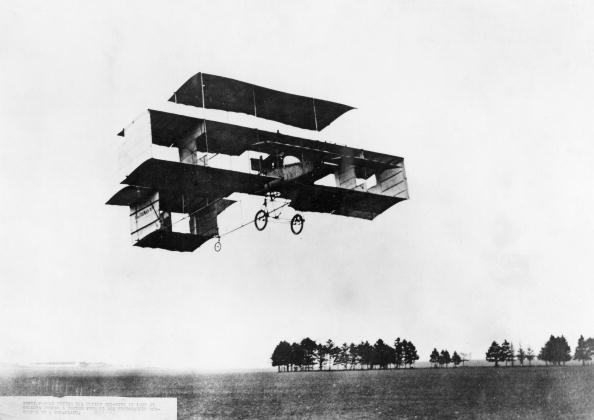
Henri Farman (1874-1958) flying his Voisin box-kite during a period when it was temporarily converted to a tri-plane. Henry Farman, the son of the Paris correspondent of the London Standard, took up flying after deciding it would be safer then racing motorcycles or cars. He became associated with the Voisin brothers, designers and builders of aeroplanes, and later became well known for his skill in handling the machines. On 13 January 1908, he made aviation history when he completed the first circular kilometer flight in Europe at Issy-les- Molineaux.

The Bell Cygnet ll, with tetrahedral-cell wing design. Designed by Alexander Graham Bell and built by the Aerial Experiment Association, the 5,000-cell multiplane was tested unsuccessfully in Nova Scotia in 1907. J A D McCurdy sits at the wheel. (Photo by Hulton Archive/Getty Images)
Would you like to support Flashbak?
Please consider making a donation to our site. We don't want to rely on ads to bring you the best of visual culture. You can also support us by signing up to our Mailing List. And you can also follow us on Facebook, Instagram and Twitter. For great art and culture delivered to your door, visit our shop.
